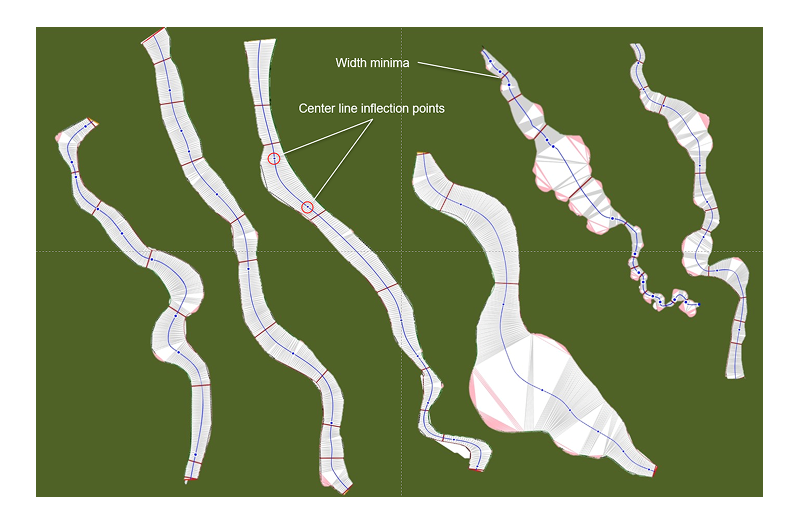Modern channel belt dataset
The channel belt data in our data pack is entirely derived from meticulous mapping of modern systems. A channel belt includes all deposits associated with the migration of a channel over time.
Depending on the river style and the history of channel migration, the shapes of channel belts can range from being relatively simple and uniform to highly complex and irregular. The variability of channel belts is accounted for in the methodology adopted for describing and measuring their shapes, which is explained in the subsequent sections.
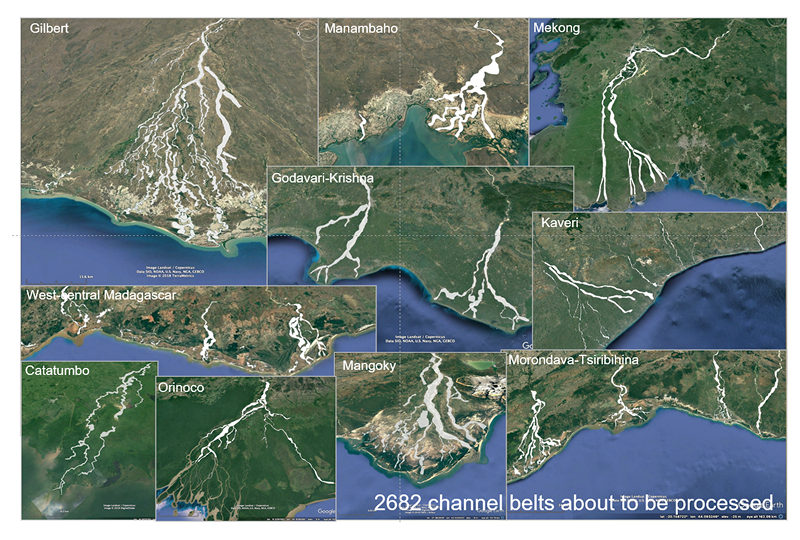
Overview of measurement methodology
Mapping of channel belts consists of the following steps:
-
Perform extensive geomorphological mapping of channelized deposits, which includes the identification of features such as active and abandoned channels, scroll bars, and standing bodies of water.
-
Map out the outline of channel belts where this can be done objectively. The outline includes all internal channel-migration related depositional elements. Channel belts that could not be mapped due to various difficulties, such as poor visibility, have not been included in the database. The practical implication of this is that not all channel belts from every system have been used.
The example shown below outlines how channel belts have been mapped in the Rio de la Plata system, Argentina.
The system's geomorphology has been mapped. The outline of one of the channel belts in the area is shown in yellow. Note the irregular shape of the channel belt, which reflects the evolution of depositional elements formed by a migrating channel.
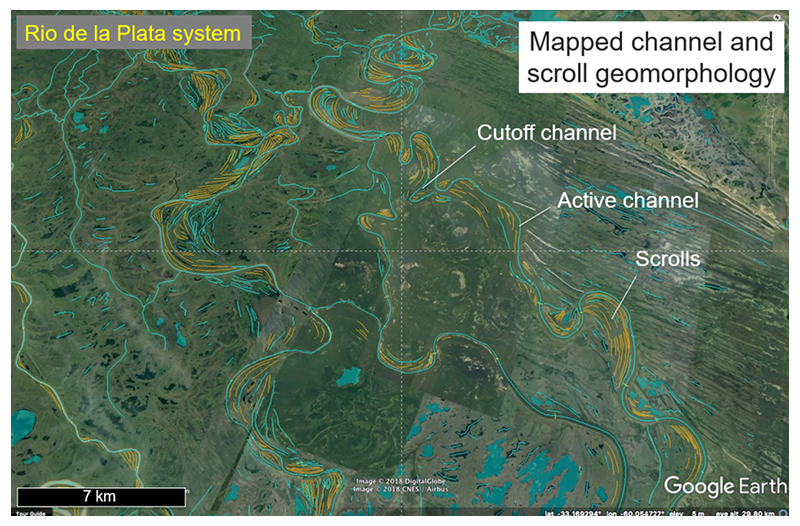
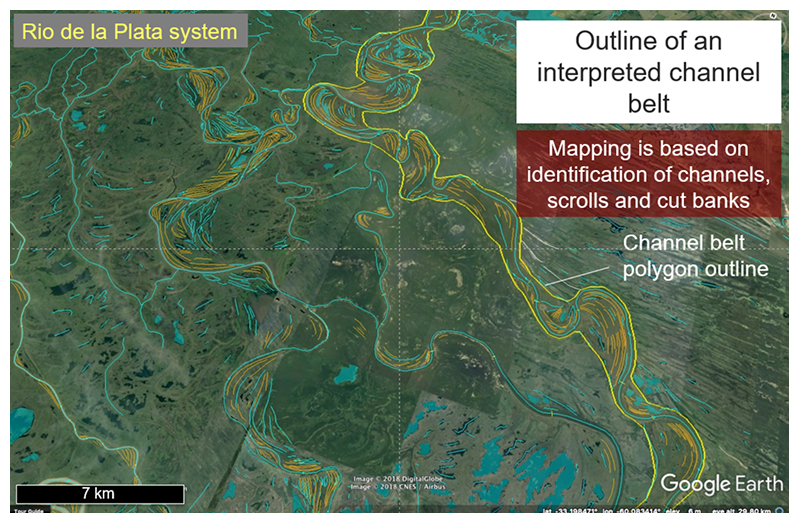
The map below shows all of the channel belts which have been mapped in the same area.
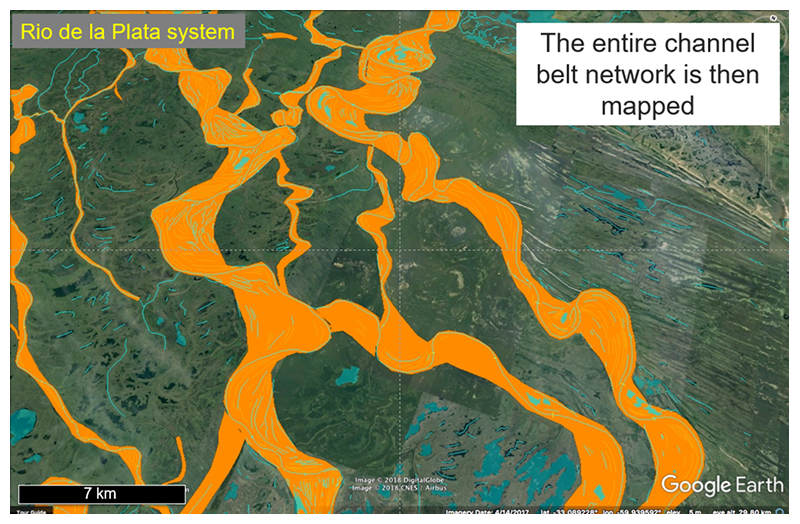
Channels belts are typically described for an entire system. This allows studying how their size and shape changes with increased distance from the coastline.
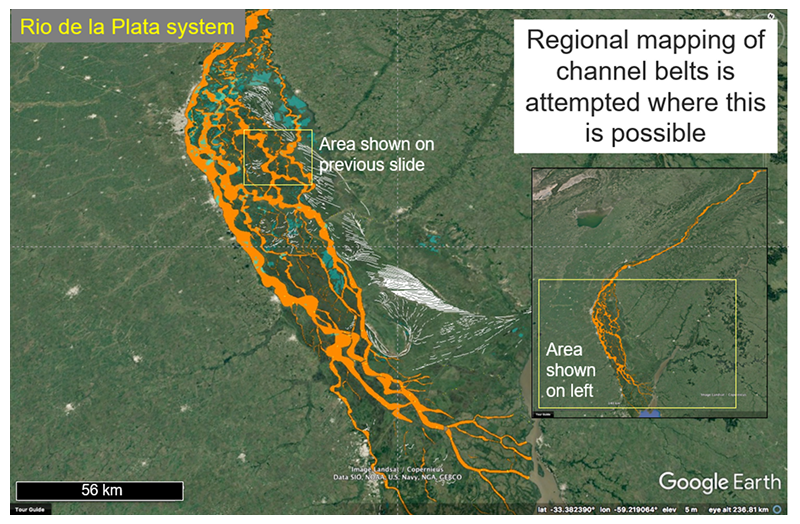
Parameters measured
We have employed a specifically designed computer-based algorithm to describe the shapes of channel belts. As the examples below illustrate, the shapes of channel belts can be highly irregular.
Running the algorithm involves a few manual steps, which are part of the data collection process.
Our software identifies the best candidates for the beginning and end of a channel belt polygon, which is then quality-checked manually for each channel belt included in the database.

The algorithm identifies areas of extra width, which we informally refer to as "type 2" areas. This is accomplished using a background Delaunay triangulation method. These extra wide areas are highlighted in yellow and pink in the image below. Type 1 areas, which are more uniform in shape, are shown in grey. One practical reason for defining type 2 areas is to find a center line through the polygon. Highly bulging portions of the channel belt are excluded from the algorithm determining the center-line shape (see examples of centerlines further down).
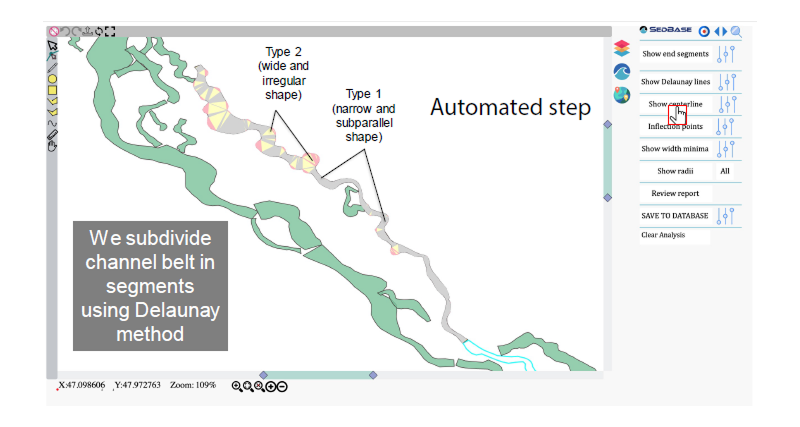
A center line is automatically determined by the algorithm, which also identifies the positions of inflection points. Inflection points are placed at locations where the direction of curvature of the center lines changes.
We use the inflection points of channel belts as one of the methods to quantitatively describe their shapes.
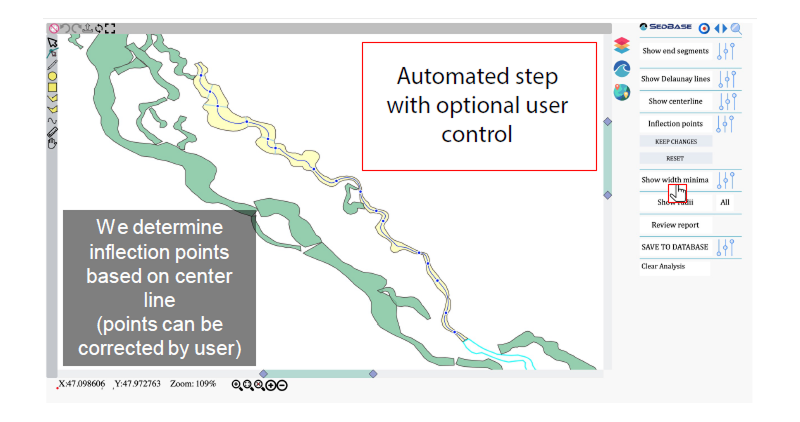
Another component of the algorithm identifies local width minima (see red lines below). These are the locations where the width of the channel belt reaches a local minimum. We also gather statistical data on these measurements.
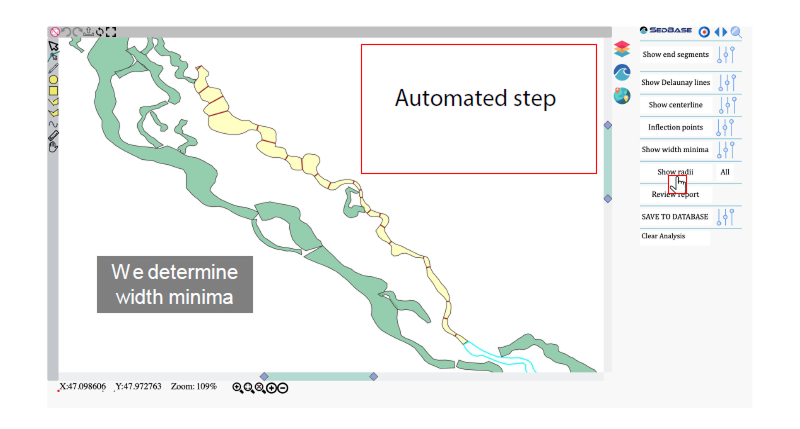
We can use Type 2 areas to determine the radius of a circle that best fits an extra-wide portion of a channel belt (see examples below). Such measurements can potentially serve as proxies for the sizes of point bars in the channels forming the channel belts.
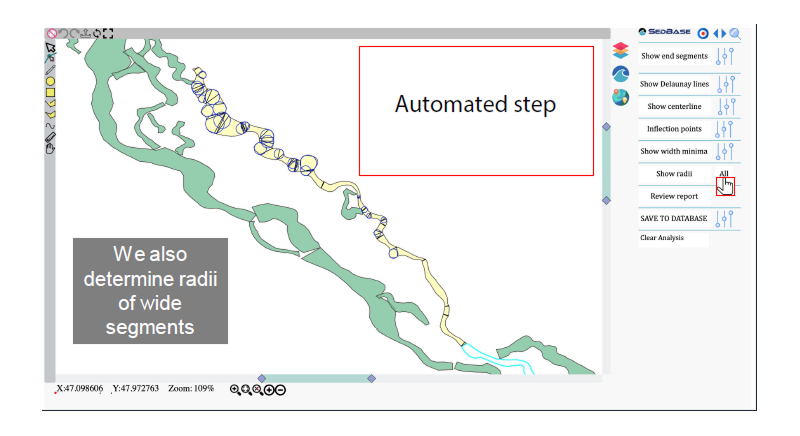
All of the above calculations are performed in a single step by the algorithm. The final step in the methodology is then to manually QC the resultant values.
The resulting quantitative measurements are subsequently summarized in tables.
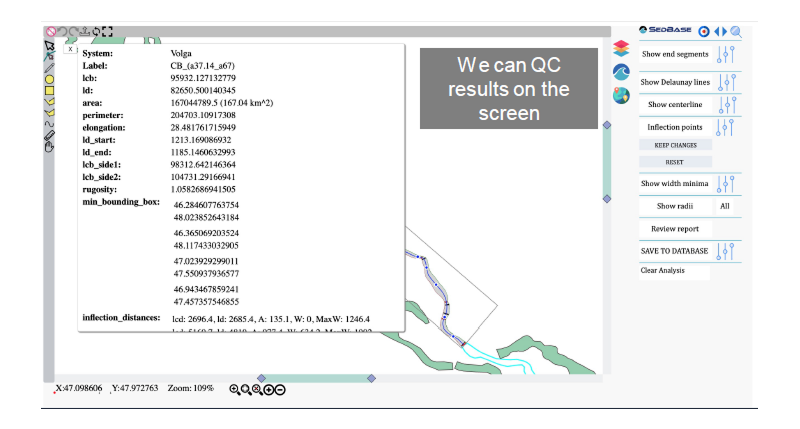
The image below shows examples of channel belts that show variability in shape, local width minima and inflection point distribution that are part of the database.
